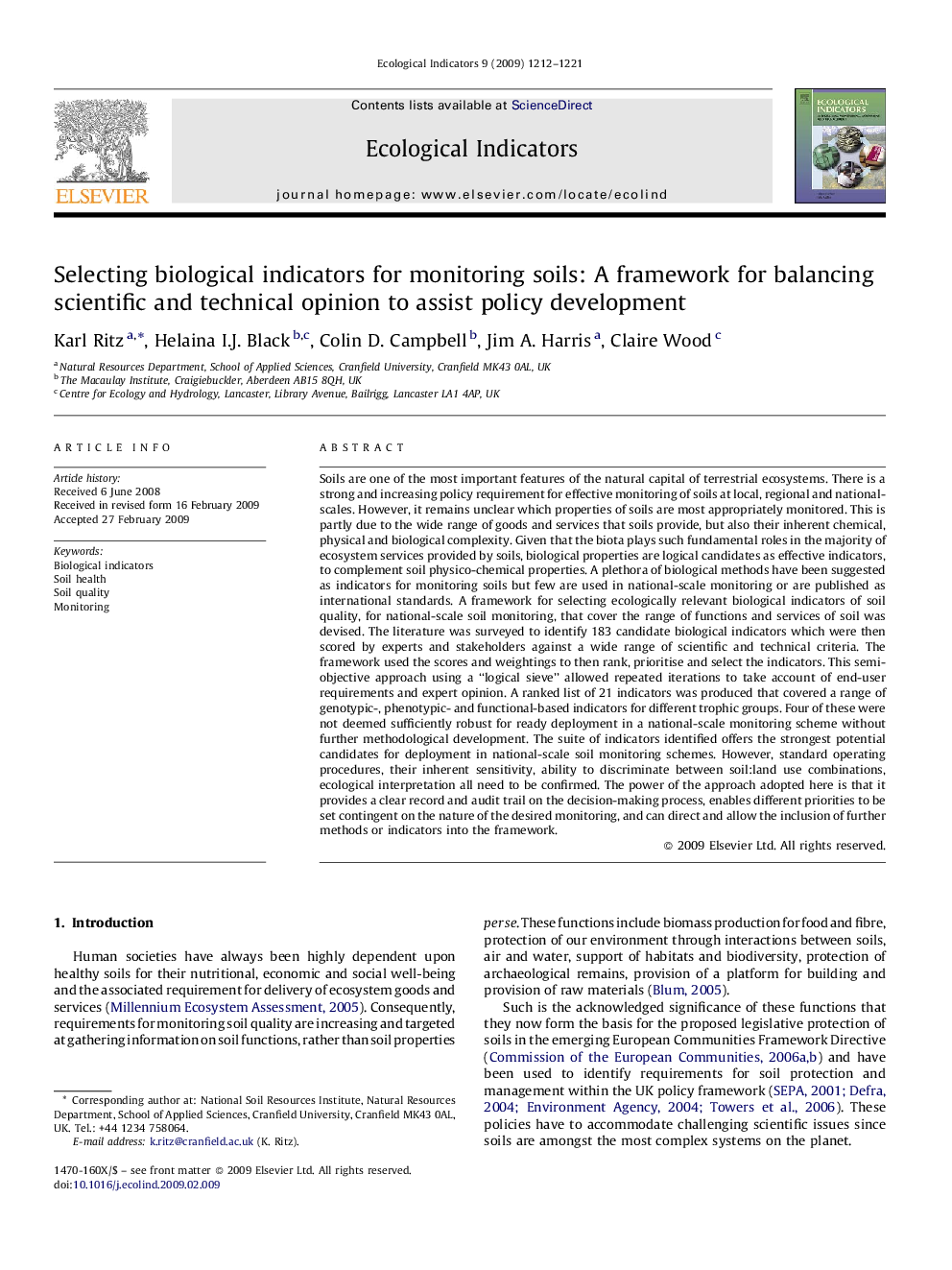| Article ID | Journal | Published Year | Pages | File Type |
|---|---|---|---|---|
| 4374350 | Ecological Indicators | 2009 | 10 Pages |
Soils are one of the most important features of the natural capital of terrestrial ecosystems. There is a strong and increasing policy requirement for effective monitoring of soils at local, regional and national-scales. However, it remains unclear which properties of soils are most appropriately monitored. This is partly due to the wide range of goods and services that soils provide, but also their inherent chemical, physical and biological complexity. Given that the biota plays such fundamental roles in the majority of ecosystem services provided by soils, biological properties are logical candidates as effective indicators, to complement soil physico-chemical properties. A plethora of biological methods have been suggested as indicators for monitoring soils but few are used in national-scale monitoring or are published as international standards. A framework for selecting ecologically relevant biological indicators of soil quality, for national-scale soil monitoring, that cover the range of functions and services of soil was devised. The literature was surveyed to identify 183 candidate biological indicators which were then scored by experts and stakeholders against a wide range of scientific and technical criteria. The framework used the scores and weightings to then rank, prioritise and select the indicators. This semi-objective approach using a “logical sieve” allowed repeated iterations to take account of end-user requirements and expert opinion. A ranked list of 21 indicators was produced that covered a range of genotypic-, phenotypic- and functional-based indicators for different trophic groups. Four of these were not deemed sufficiently robust for ready deployment in a national-scale monitoring scheme without further methodological development. The suite of indicators identified offers the strongest potential candidates for deployment in national-scale soil monitoring schemes. However, standard operating procedures, their inherent sensitivity, ability to discriminate between soil:land use combinations, ecological interpretation all need to be confirmed. The power of the approach adopted here is that it provides a clear record and audit trail on the decision-making process, enables different priorities to be set contingent on the nature of the desired monitoring, and can direct and allow the inclusion of further methods or indicators into the framework.
